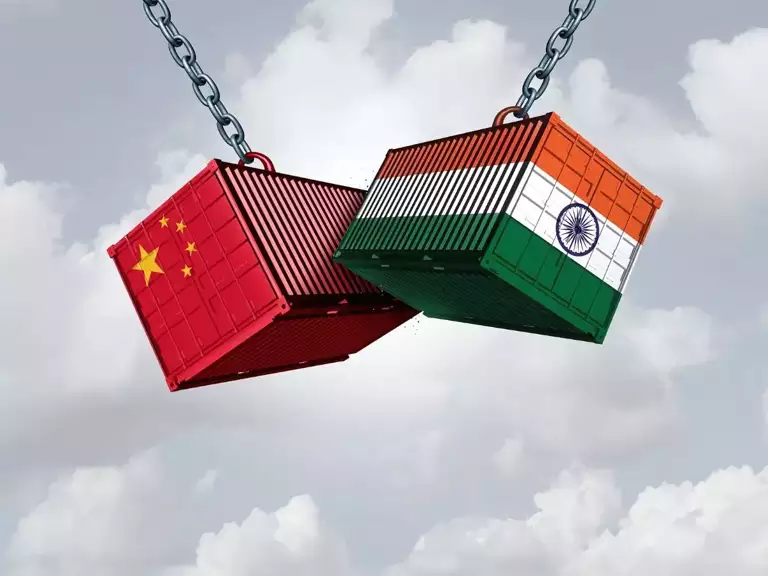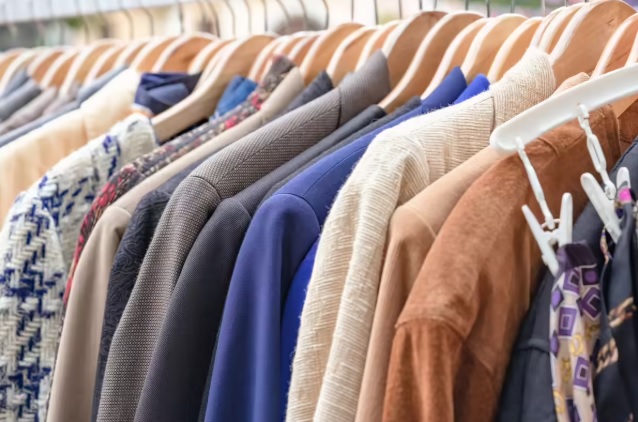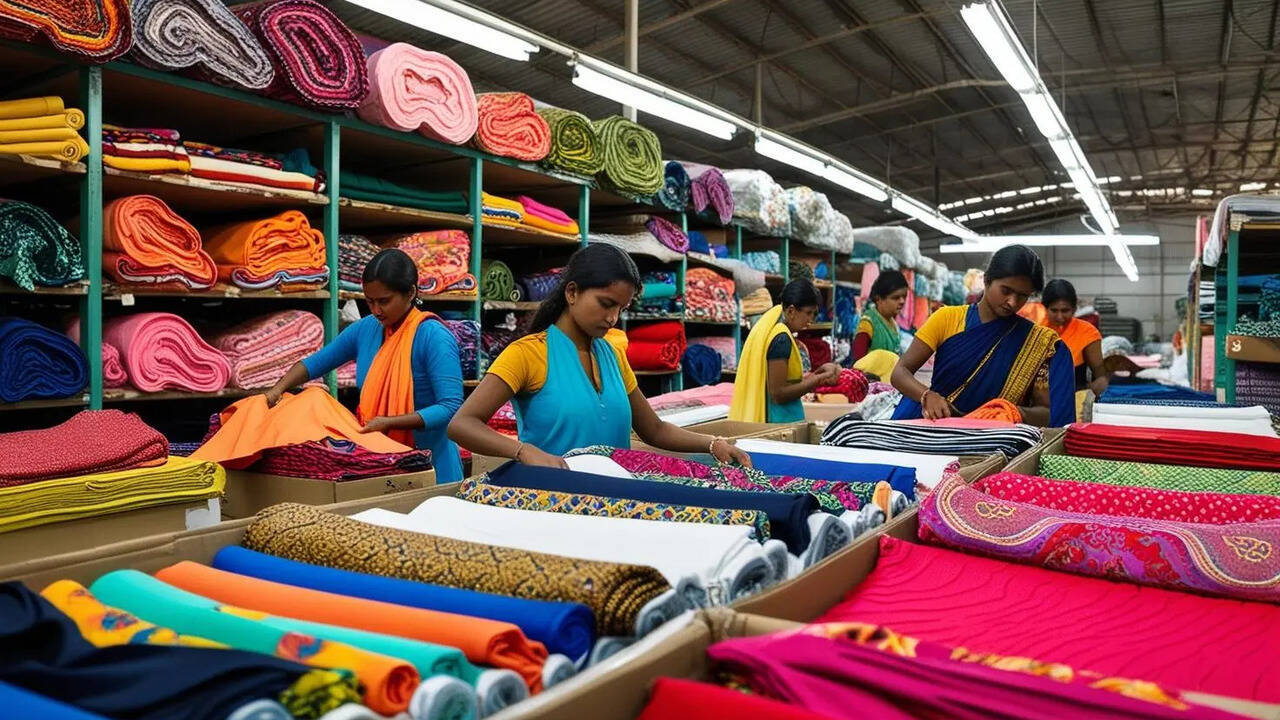FW
Currently undergoing significant transformation, the GCC textile market is projected to grow from $16.32 billion in 2025 to $25.21 billion by 2032, expanding at a CAGR of 6.4 per cent during this period. This expansion is being fueled by rapid urbanization, evolving consumer preferences, and strategic government initiatives aimed at increasing regional self-reliance in textile production.
The United Arab Emirates (UAE) and Saudi Arabia are at the forefront of this growth. Dubai's established role as a global textile trading hub, exceeding $4.5 billion in trade in 2023, continues to drive the market. Simultaneously, Saudi Arabia's ambitious Vision 2030 is accelerating domestic manufacturing, including a $50 million investment in a textile production hub dedicated to Islamic and modest fashion, bolstering self-sufficiency and meeting regional and global demand.
Growth in this segment is dominated by the synthetic fibers segment, accounting for 48 per cent of the market in 2025 due to their cost-effectiveness and durability, especially in high-temperature climates. Natural fabrics hold approximately 32 per cent of the market, catering to luxury and sustainable fashion preferences. The apparel segment remains the largest with a 54 per cent share, propelled by growth in sportswear, Islamic fashion, and high-end brands. Technological advancements and expanding retail infrastructure, including e-commerce, are enhancing local manufacturing efficiency and market accessibility.
Despite the optimistic outlook, challenges persist, notably a heavy reliance on raw material imports, which exposes the region to price volatility. High energy costs, limited skilled labor, and regulatory hurdles also impede local production scalability.
However, abundant opportunities lie in sustainable fashion and technical textiles. The global push for eco-friendly products creates avenues for GCC manufacturers to innovate with organic and recycled materials. The rising demand for modest and Islamic fashion presents a lucrative niche, both domestically and for export. Furthermore, increasing foreign direct investment (FDI) and international collaborations are expected to unlock new revenue streams, positioning the GCC as a significant manufacturing and export hub in the global textile industry.
The US subsidiary of Indo Count Industries (ICIL), Indo Count Global (ICG) has re-launched Wamsutta as a direct-to-consumer (DTC) brand. The company makes Wamsutta’s products available at wamsutta.com in the United States.
Indo Count acquired the Wamsutta brand from Beyond, Inc. in April 2024. This reintroduction marks a strategic move to strengthen Indo Count's presence in the premium segment of the US home textiles market, featuring an updated product assortment and refreshed brand positioning.
Founded in 1846, Wamsutta quickly rose to become a preeminent American producer and, eventually, the world's largest cotton weaving plant. Beloved by millions, the brand became a household name and a category leader in bedding and bath products. The re-launch aligns with Indo Count's strategy to leverage heritage brands with high consumer awareness and reposition them for modern growth through a digitally led, vertically integrated approach.
According to Mohit Jain, Executive Vice-Chairman, Indo Count Industries, the brand Wamsutta has always stood for quality and comfort that endures. Now, with a refreshed brand, premium positioning, and the direct-to-consumer channel, it connects with a new generation of consumers while honoring the brand's legacy, he adds.
The new wamsutta.com platform showcases a curated selection of premium bedding and bath products, emphasizing quality, simplicity, and timeless design. Indo Count's deep commitment to quality, sustainability, and customer-first service underpins every product offered. The DTC model enables Indo Count Global to directly engage with customers, gather real-time insights, and build long-term brand equity through digital storytelling and product experience, all while delivering timeless comfort and enduring quality.
Established in 1988, Indo Count Industries (ICIL) is a world-renowned home textiles company and globally the largest manufacturer of bed linen. With state-of-the-art manufacturing facilities in India and the United States, ICIL ensures superior quality across its fashion, institutional, and utility bedding segments. The company maintains a strong global presence with offices, showrooms, and distribution centers in New York, Charlotte (the US), Manchester (UK), and Dubai (UAE), complemented by a growing e-commerce footprint in the US, UK, UAE, and India.

In the world of global trade, few terms have the covert glamour and historical baggage of ‘submarining’. Once a relic of the quota-era under the now-defunct Multi-Fiber Agreement (MFA) the controversial practice, is making waves again. Spurred by a new climate of protectionism and punitive tariffs—particularly those introduced during the Trump administration—this old trade trick is quietly regaining momentum, reshaping how garments make their way into the US market.
But this time, the game has evolved. The geography is different, the stakes are higher, and the players include not just foreign exporters but U.S.-based actors who’ve found clever ways to flip the script from within.
Submarining 101, rebirth of a trade hack
To grasp the gravity of this revival, we must return to the era of the MFA (1962-05), when garment imports into the US States were strictly controlled by country-specific quotas. Exporters, especially from big sourcing countries like China, faced caps on how much they could send to lucrative markets like the US. Submarining emerged as a workaround—ingenious and illegal.
Here’s how it worked: Chinese apparel was shipped to third countries—often in Africa—that weren’t subject to quotas. There, without any real processing, the goods were relabeled as originating from the intermediary country and re-exported to the US quota-free and sometimes duty-free. Everyone benefited: Chinese factories bypassed quota constraints, African traders earned tidy margins without making a single garment, and US importers stocked their shelves with high-demand items at lower prices.
This workaround netted billions before fading into obscurity with the MFA’s demise and the liberalization of global trade in 2005. But like all cycles, protectionism is back—and so is submarining.
A Trump-era aftershock
Fast forward to the late 2010s and early 2020s, under President Donald Trump’s administration, a slew of new tariffs and duties—especially targeting Chinese-made goods was unleashed in the name of protecting American industry. From solar panels to steel, and yes, to apparel, the US found itself reintroducing steep trade barriers.
These tariff walls, according to analysts, have rekindled the conditions for submarining to flourish once more. Only this time, the third-country detours are playing out across the Middle East, Western Asia, and parts of Southeast Asia—regions with preferential access to US markets or minimal exposure to the new duties.
What’s changed is not the method but the motive. In place of avoiding quotas, today’s submariners aim to dodge tariffs that can reach up to 25 per cent on certain Chinese goods. The garments are moved through countries like Jordan, Bangladesh, or even the UAE, where they are given a new paper trail and re-exported under different origin claims—sometimes with minor processing, other times with none at all.
Trump, for his part, responded with characteristic bluntness, threatening “serious action against the crooked and deceitful players who are undermining his quota regime.” But experts say the problem is not just overseas
The homeland twist, submarining on US soil
Data from 2024 adds a fresh, if unsettling, layer to the story: the US itself may be acting as a launchpad for its own brand of submarining.
Table: US garment trade 2024
|
Metric |
Value |
|
US Garment Exports (Total) |
$6.0 billion |
|
US Garment Re-exports |
$3.5 billion |
|
US Global Ranking (Net Exports) |
18th (Below Egypt) |
|
Key Re-export Recipients |
Canada, Mexico |
|
Share of Re-exports to NA Partners |
64% ($2.2 billion) |
|
Top Re-exported Products |
T-shirts, Cotton Casual Pants |
Of the $6 billion in total US garment exports in 2024, more than half—$3.5 billion—were classified as re-exports, meaning the goods were imported into the US and then exported again without substantial transformation. This moved the US down to 18th in the world in net apparel exports, trailing countries like Egypt. Canada and Mexico—America’s key partners under the USMCA—absorbed $2.2 billion worth of these re-exports, mostly comprising garments that were originally imported from Asia.
The North American loop, a legal grey zone
Here’s how the domestic version of submarining unfolds:
Apparel imports from Asia enter the US—largely comprising basic but high-volume items like T-shirts and cotton pants. These goods are then re-exported to Canada or Mexico, capitalizing on duty-free benefits under USMCA. Back they come—often with minor tweaks or merely a change of documentation—to the US market under new origin status and free from the steep tariffs originally imposed on direct imports from Asia.
It’s a tidy legal loop that stretches the definition of “substantial transformation” but remains technically difficult to police. With tariffs pushing companies to seek creative trade routes, this US-based submarining is estimated to grow into a billion-dollar practice, piggybacking on loopholes in existing trade agreements.
More than just a trade trick
The economic implications are manifold. For starters, submarining erodes the effectiveness of trade policies meant to safeguard domestic manufacturing or pressurize geopolitical rivals. For compliant businesses, it introduces a competitive disadvantage, as they face higher landed costs while others game the system.
Ethically, it raises red flags over transparency. Consumers may believe they're buying a T-shirt ‘Made in Mexico’ when it’s effectively a Chinese product that’s played hopscotch across trade borders. “This is a test of regulatory will,” said a trade compliance expert on condition of anonymity. “Governments must decide whether they’ll clamp down on these practices or tacitly allow them to flourish because they keep supply chains stable and prices down.”
Regulation or reinvention
As trade tensions persist and more nations flirt with economic nationalism, the conditions for submarining are only likely to grow more favorable. Technology from AI-powered customs inspections to blockchain tracking is being explored as a countermeasure. But enforcement lags behind innovation.
The return of submarining marks more than a curious footnote in trade history—it’s a powerful indicator of how policy can drive both ingenuity and subversion in global commerce. Whether regulators crack down or turn a blind eye may well determine whether submarining stays submerged—or resurfaces as a defining force in 21st-century trade.
A direct result of the ongoing tariffs that have pushed retailers to diversify their supply chains, US apparel imports from China hit a 22-year low in May. This significant decline highlights the lasting impact of trade tensions, prompting a notable shift in sourcing toward countries like Vietnam, Bangladesh, and India.
Historically the dominant apparel exporter to the US, China has seen its market share diminish as a consequence of escalating US tariffs, some reaching as high as 145 per cent under President Donald Trump. This has compelled American companies to actively reduce their dependence on Chinese manufacturing.
Trade experts indicate that this trend of decreasing imports from China isn't new. US interest in Southeast Asian production has been on the rise since mid-2023, evident in the increased demand for factory inspections across the region. These ongoing shifts suggest fundamental and enduring changes in global supply chain dynamics, changes that could face further challenges as temporary tariff pauses eventually expire.
Pakistan's textile and apparel exports (T&A) rose by 7.37 per cent to $16.365 billion between July 2024 and May 2025. This sector now accounts for over 55 per cent of the nation's total exports.
This growth was primarily fueled by strong performance in knitwear and non-knit ready-made garments (RMG). Conversely, exports of cotton yarn and fabric declined.
A notable indicator of renewed confidence and investment in the sector is the substantial 61 per cent surge in imports of textile machinery. This suggests manufacturers are upgrading and expanding their capabilities.
Looking back, Pakistan’s total textile exports in FY24 registered a marginal growth after a sharp decline in FY23, indicating a recent rebound and more stable growth trajectory.
Set to be held from August 20-22, 2025, the 8th edition of the İstanbul Fashion Connection (IFCO) will once again unite the global fashion community in Istanbul.
Organized by the subsidiary of the Istanbul Apparel Exporters’ Association (İHKİB), İTKİB Fairs Inc, IFCO is one of Europe's largest apparel and fashion trade fair. It will serve as a forward-thinking platform for creative collections, technological advancements, and international business growth at the Istanbul Expo Center.
Held in February 2025, the previous IFCO edition featured 513 exhibitors, and attracted 33,788 trade visitors from over 150 countries across eight fully booked halls. The upcoming August edition plans to build on this success, with over 300 exhibitors from all corners of the fashion industry expected to participate.
During this edition, over 20 Turkish designers will unveil their latest collections, offering international buyers a unique glimpse into Turkey's vibrant and innovative fashion scene.
The fashion show will include impactful runway presentations showcasing visionary collections that reflect the evolving landscape of the global fashion world.
The fair will also organize professional seminars and trend analysis where leading industry experts, including trend forecasters from WGSN, will provide deep dives into macro trends for Spring/Summer 2026, covering color palettes, key pieces, and commercially viable products.
İHKİB is actively spearheading the digital and sustainable transformation of Turkey's fashion industry through initiatives like Metamorphosis (part of the EU’s IPA-II program). The Turkish textile industry is proactively addressing the European Union’s growing sustainability demands, particularly CO2 footprint regulations, by investing heavily in eco-friendly production methods. Practices like organic cotton cultivation, recycled textiles, and water-saving technologies are becoming increasingly common across the sector.
IFCO continues to be the ultimate meeting point where creativity and commercial success converge - a global business hub where buyers, brands, designers, and industry leaders come together to shape the future of fashion.
Nike has introduced - Giannis Freak 7, the latest addition to the Nigerian-Greek professional basketball player Giannis Antetokounmpo's signature shoe range. Meticulously designed to support the ‘most lethal Euro step in all of basketball,’ this new silhouette caters to Giannis and other dedicated hoopers who push the limits of their game.
Boasting an innovative ‘Antetokounmpo’ traction pattern, the Giannis Freak 7 shoe range is designed to offer a rigid feel on its lateral side for sharp cuts and quick stops, while providing a smooth medial ride for seamless transitions. This allows players to create crucial separation and leave defenders behind.
Complementing this advanced traction is a full-length, wall-to-wall Cushlon 3.0 midsole. This groundbreaking feature delivers exceptional comfort and responsiveness, crucial for athletes who spend countless hours honing their skills. The midsole, outsole, and upper all incorporate mechanically engineered grooves, allowing for optimal flex and compression to enhance the Euro step's power and agility.
Emphasizing on the shoe's critical features, Antetokounmpo says, the Giannis Freak 7 offers an incredible grip and is stable enough to move side to side when I play. The shoe brings the performance I need to power my game in a design that reminds me of my heritage and how much I’ve worked to get here.
The shoe's upper part is inspired by both Giannis' heritage and Nike's design history, subtly referencing Greek sandals to provide superior heel lockdown and foot containment during sharp cuts. Giannis' surname is even spelled out in the traction pattern, and his signature logo is subtly integrated into the upper. The lead ‘Ignition’ colorway embodies the intensity Giannis brings to the court, designed to inspire young athletes to match his notorious work ethic.
Ross Klein, Senior Director-Men’s Basketball Footwear Product Design, Nike, notes, the show reimagines the iconic Greek sandal into a containment structure tailored for the demands of Giannis’ trademark and explosive Euro step. The silhouette fuses modern energy and fluid motion with the traction and lateral containment needed to perform at the highest level, he adds.
The Giannis Freak 7 also underscores Nike's unwavering dedication to basketball, its athletes, and the sport's vibrant culture. By actively listening to athletes at all levels, from EYBL to professional play, Nike is continually shaping the future of basketball footwear. Their industry-leading designs empower athletes to leverage their athleticism as a competitive advantage. Nike further enriches these footwear innovations with colorway stories, materials, and finishes that resonate with the bold and confident energy of the next generation of hoopers.
Through creating top-tier products for elite athletes and making them accessible to all who love the game, Nike champions the players at the heart of basketball, fueling its future and culture for current all-stars and the next generation alike.
Nike has introduced - Giannis Freak 7, the latest addition to the Nigerian-Greek professional basketball player Giannis Antetokounmpo's signature shoe range. Meticulously designed to support the ‘most lethal Euro step in all of basketball,’ this new silhouette caters to Giannis and other dedicated hoopers who push the limits of their game.
Boasting an innovative ‘Antetokounmpo’ traction pattern, the Giannis Freak 7 shoe range is designed to offer a rigid feel on its lateral side for sharp cuts and quick stops, while providing a smooth medial ride for seamless transitions. This allows players to create crucial separation and leave defenders behind.
Complementing this advanced traction is a full-length, wall-to-wall Cushlon 3.0 midsole. This groundbreaking feature delivers exceptional comfort and responsiveness, crucial for athletes who spend countless hours honing their skills. The midsole, outsole, and upper all incorporate mechanically engineered grooves, allowing for optimal flex and compression to enhance the Euro step's power and agility.
Emphasizing on the shoe's critical features, Antetokounmpo says, the Giannis Freak 7 offers an incredible grip and is stable enough to move side to side when I play. The shoe brings the performance I need to power my game in a design that reminds me of my heritage and how much I’ve worked to get here.
The shoe's upper part is inspired by both Giannis' heritage and Nike's design history, subtly referencing Greek sandals to provide superior heel lockdown and foot containment during sharp cuts. Giannis' surname is even spelled out in the traction pattern, and his signature logo is subtly integrated into the upper. The lead ‘Ignition’ colorway embodies the intensity Giannis brings to the court, designed to inspire young athletes to match his notorious work ethic.
Ross Klein, Senior Director-Men’s Basketball Footwear Product Design, Nike, notes, the show reimagines the iconic Greek sandal into a containment structure tailored for the demands of Giannis’ trademark and explosive Euro step. The silhouette fuses modern energy and fluid motion with the traction and lateral containment needed to perform at the highest level, he adds.
The Giannis Freak 7 also underscores Nike's unwavering dedication to basketball, its athletes, and the sport's vibrant culture. By actively listening to athletes at all levels, from EYBL to professional play, Nike is continually shaping the future of basketball footwear. Their industry-leading designs empower athletes to leverage their athleticism as a competitive advantage. Nike further enriches these footwear innovations with colorway stories, materials, and finishes that resonate with the bold and confident energy of the next generation of hoopers.
Through creating top-tier products for elite athletes and making them accessible to all who love the game, Nike champions the players at the heart of basketball, fueling its future and culture for current all-stars and the next generation alike.
American sportswear giant New Balance has officially named Spanish pop sensation Rosalía as its new global brand ambassador.
To kick off this partnership, the Grammy-award-winning artist stars in a five-part cinematic campaign. The film begins with Rosalía at the New Balance headquarters in Boston, culminating in the reveal of a custom painting featuring the debut New Balance x Rosalía logo.
The campaign also showcases New Balance's newest lifestyle shoe, the 204L. This shoe blends the low-profile aesthetic of retro runners with early 2000s tech, all wrapped in an all-over suede design. The new New Balance 204L is set for a global release in July through New Balance retail channels.
A highly acclaimed artist and producer, Rosalia has won two Grammy Awards and twelve Latin Grammy Awards for her unique pop songs. She rose to international fame in 2018 with her sophomore album, ‘El Mal Querer.’ This record earned her a Grammy and eight Latin Grammys, including Album of the Year, making her the first Spanish-language artist to be nominated for Best New Artist at the Grammys.
Four years later, she released her critically acclaimed ‘Motomami’ album, which she entirely wrote, performed, recorded, and produced. The album was followed by a sold-out world tour.
Chris Davis, Brand President and Chief Marketing Officer, New Balance avers, Rosalía reflects the celebration of independence that the New Balance brand has represented since 1906. She will help the brand rewrite the rules through a coauthored strategy focusing on product and storytelling.
With a current market capitalization of $84.7 million, sustainable footwear brand Allbirds, Inc has signed three new distribution agreements across Eurasia. These new partnerships include Beosport for the Balkans (effective January 2026), 911 Fashion for Israel (effective October 2025), and Tradist Distribution for Turkiye and Central Asia (effective July 2025). These agreements bring Allbirds' total global distribution deals to 16.
Annie Mitchell, CFO, Allbirds, states, the brand’s strategic decision to transition to a distributor model in international geographies is proving to be highly successful. The company has partnered with world-class distributors and extended its brand reach with a profitable operating model" over the last 18 months. However, InvestingPro’s financial health assessment indicates Allbirds faces challenges with cash burn, and analysts anticipate a continued sales decline this year, she adds.
Founded in 1996 and based in Belgrade, Serbia, Beosport specializes in premium sportswear and lifestyle brands in Southeast Europe. 911 Fashion, established in 2001 in Tel Aviv, is a GOTS certified fashion and lifestyle distributor with 35 retail locations in Israel. Tradist Distribution, headquartered in Istanbul, focuses on distributing premium lifestyle, footwear, and bag brands across Turkiye, Eastern Europe, and Central Asia.
Founded in 2015, Allbirds is known for its sustainable footwear design, utilizing materials like Merino wool, tree fiber, and sugarcane.
In Q1 2025, Allbirds recorded net revenue of $32 million, slightly exceeding its guidance midpoint. The company improved its adjusted EBITDA loss by 11 per cent to $19 million, though its gross margin decreased to 44.8 per cent. Allbirds also secured a $75 million asset-based revolving credit facility and launched an At-the-Market (ATM) program to potentially sell up to $50 million in Class A common stock. The brand has also expanded into Central and South America and Southern Europe with Kiwi Life Group and Trendy King. Looking ahead, Allbirds plans over 15 new footwear styles to debut in mid-July and projects full-year 2025 net revenue between $175 million and $195 million, expecting a return to top-line growth in Q4 2025.











